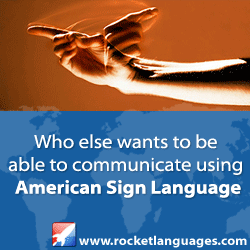Law Enforcement and Sign Language – Top Cop Communicators
1
Law Enforcement and American Sign Language
Law enforcement is another venue where the practical use of American Language (ASL) can be observed. When law enforcers like policemen go and find perpetrators in order to arrest them, Law Enforcement Communication is vital to the success of the operation.
No matter how hard you train physically and mentally, each situation is a case-to-case basis and you can’t really predict exactly what will happen. You can’t predict what the suspect will do, and where you’ll need to go in order to arrest him or her. Communication is important when you’re working in a team or with a partner because you will need to work together and your actions need to be completely in sync.
Oftentimes, law enforcement operations happen so fast and this means you can’t really take your time. You and your partner will have to think on your feet and act fast, and ASL will help you communicate without using words.
ASL for Team Law Enforcement Operations
When policemen are in the middle of a high-risk law enforcement operation and are trying to catch a suspect, they often work in teams or in pairs. Noise and speech are often seen as an impediment to these operations, especially when they’re trying to catch a perpetrator by surprise. You can’t really use speech because that will warn the perpetrator of your presence and he or she might be able to escape. Don’t warn that Perp, sign to your partner to Catch that Perp and just get the operation done with safely.
Law enforcement, of course, is not just about the chase. While the actual ‘chase’ or the act of going after these perpetrators is perhaps the most high-energy and high-adrenaline part of it, this is not all that law enforcement has to it. There’s also the investigation phase, the actual arrest, the questioning, and many others.
It’s also not always a planned operation because people can’t always predict when chaos will ensue and when someone will do something crazy that disturbs the peace. You can’t predict when someone actually breaks the law, whether by accident or on purpose. As a law enforcer, however, it is your duty to be always on call when something wrong happens, and that’s what makes things extra challenging.
Regardless of the circumstances, ASL is important for law enforcers to learn because it helps them communicate with each other when spoken words fail them, or when speech is no longer helpful. If you and your partner are both well-versed with ASL, then this gives you an edge and will help your operations run smoothly.
American Disabilities Act Guide for Law Enforcement Officers
ASL is also critical for law enforcement because a significant percentage of the population is deaf or hard at hearing. Hearing loss and varying levels of hearing difficulty can be a problem when you’re enforcing the law because you can’t expect the deaf to understand whatever it is you’re saying, and vice versa.
Communication is such a vital part in law enforcement operations, and difficulties in hearing can make the simplest commands impossible to follow. For instance, something as simple as putting your hands behind your back can’t be understood by a deaf person if the policeman does not know how to communicate through ASL. If you’re a policeman and you start questioning a deaf person on the spot in order to try and fix the situation, all kinds of miscommunication will ensue if nobody in the team knows how to sign properly.
The American Disabilities Act (ADA) actually requires both state and local police and law enforcement agencies to make the extra effort and ensure that there’s effective communication between them and those who are deaf or who have a hard time hearing. Additional consideration must be given to those who are deaf, especially during the investigation phase.
To make it easier, the ADA has some guidelines for law enforcers. Deaf people or those who have a hard time hearing are entitled to the same services that law enforcement provides to everyone else, but because proper and effective communication is a part of this, then law enforcers have to make necessary adjustments.
In cases like this, knowing ASL would definitely come in handy, because that would ensure that you can communicate properly. Law enforcers who have had ASL training would definitely have an edge here, but since this is not always the case, the ADA gives some suggestions on how else one can communicate with the deaf or hard of hearing:
- Speech with gestures and visual aids
Speech can still be used because some of those who are deaf or hard at hearing can lip-read. You cannot rely just on lip-reading however because this method isn’t foolproof, and misinterpretations can still happen. When you speak, make sure you do so slowly and clearly and that your mouth is always in their line of vision. Speech should also be supplemented with hand gestures and visual aids (if possible). Just be careful with hand gestures because if you study ASL, certain hand gestures have meanings and if your understanding of that meaning is different, then this will cause more miscommunication.
- Written messages
A piece of paper or pencil where you can write what you mean is something that will make communication easier. If you’re in the police station, a computer, typewriter or teletypewriter can also be used.
- Sign language interpreter
If nobody in the law enforcement agency knows ASL, then it’s best if you get someone who is ASL-adept so he or she can do the interpretation for you. Communication is a two-way process and as much as you want to convey what you want to say as a law enforcer, it is also important that you understand what they have to say.
Whether you’re using ASL to communicate with your partner or to communicate with someone deaf or hard at hearing (whether it’s an alleged suspect, victim, or witness), it’s clear that sign language is definitely useful in law enforcement.


September 13, 2017 @ 4:53 pm
This seems like such a good idea, will have to take a look at it!